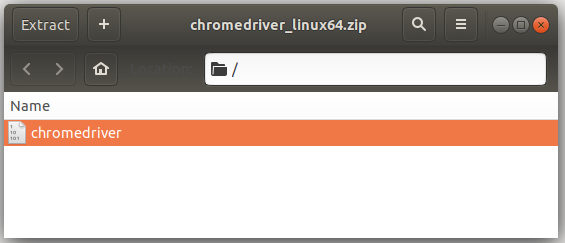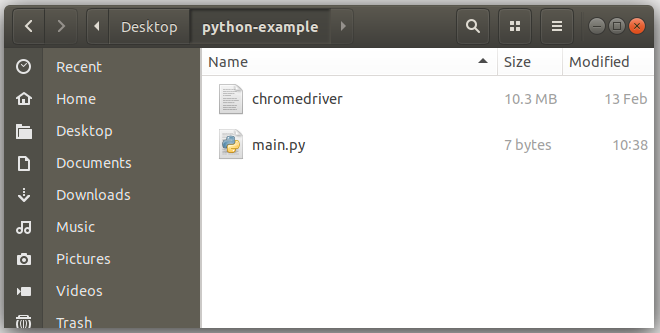
You should see your newly added path in the stream of other paths already there. To double check, quit Terminal and relaunch it.My PATH looks like: /Users/myname/Documents/WebDriver.Go to the bottom of the file and enter the path you wish to add.Now we need to tell Selenium where it is and for that we have a few choices.To do this:.The following instructions will help you create your own PATH to a unique folder on your Mac or copy the file to an existing PATH directory for ChromeDriver. The PATH variable helps Chrome find the downloaded ChromeDriver exe. Don’t get me wrong, I’ve updated PATH variables on Windows for years but never on a Mac, until now: System PATH Setup The ChromeDriver getting started guide isn’t super helpful if you are unfamiliar with including the ChromeDriver location in your PATH environment variable.

Type a Javascript expression to evaluate or "quit" to exit. The -repl flag runs Headless in a mode where you can evaluate JS expressions in the browser, right from the command line: $ chrome -headless -disable-gpu -repl -crash-dumps-dir =./tmp Check out Using headless Chrome as an automated screenshot tool. There's a great blog post from David Schnurr that has you covered. If you're looking for full page screenshots, things are a tad more involved. Running with -screenshot will produce a file named screenshot.png in the current working directory.

To capture a screenshot of a page, use the -screenshot flag: chrome -headless -disable-gpu -screenshot Ĭhrome -headless -disable-gpu -screenshot -window-size = 1280,1696 Ĭhrome -headless -disable-gpu -screenshot -window-size = 412,732 The -print-to-pdf flag creates a PDF of the page: chrome -headless -disable-gpu -print-to-pdf # Taking screenshots The -dump-dom flag prints to stdout: chrome -headless -disable-gpu -dump-dom # Create a PDF

There are some useful command line flags to perform common tasks.

In some cases, you may not need to programmatically script Headless Chrome. If you're on the stable channel of Chrome and cannot get the Beta, I recommend using chrome-canary: alias chrome = "/Applications/Google\ Chrome.app/Contents/MacOS/Google\ Chrome"Īlias chrome-canary = "/Applications/Google\ Chrome\ Canary.app/Contents/MacOS/Google\ Chrome\ Canary"Īlias chromium = "/Applications/Chromium.app/Contents/MacOS/Chromium"ĭownload Chrome Canary here. Since I'm on Mac, I created convenient aliases for each version of Chrome that I have installed. The exact location will vary from platform to platform. See /737678.Ĭhrome should point to your installation of Chrome. Note: Right now, you'll also want to include the -disable-gpu flag if you're running on Windows.


 0 kommentar(er)
0 kommentar(er)
